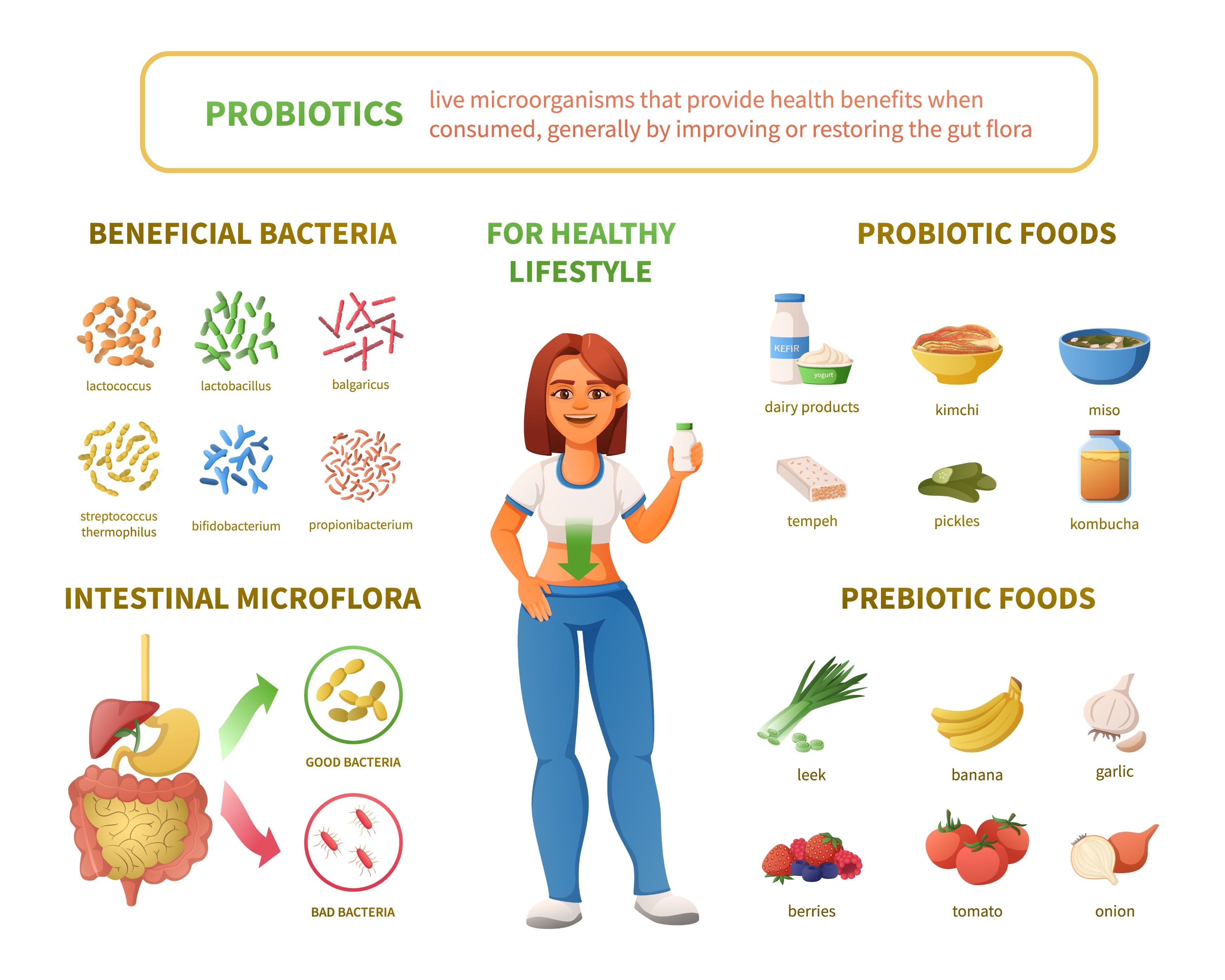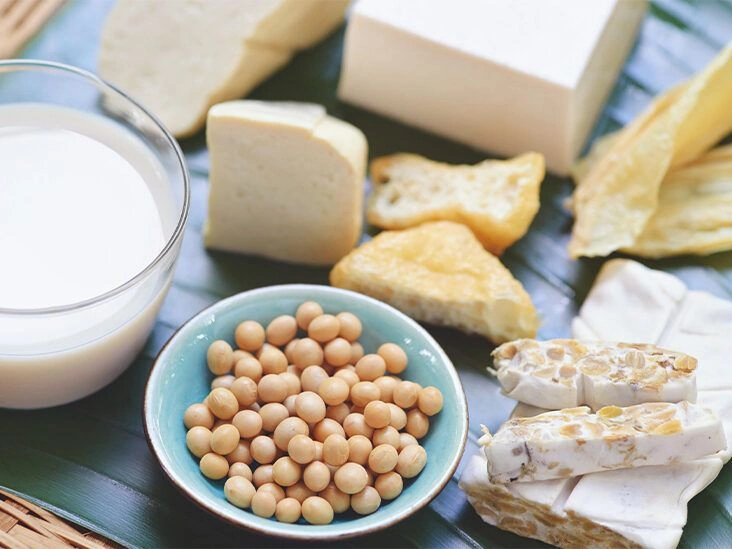Incorporating probiotics into your meals can provide a variety of health advantages. Yogurt ranks among the top probiotic sources. Other foods that supply probiotics include sauerkraut, miso, and tempeh.
Probiotics are live microbes that deliver health benefits when eaten. These helpful bacteria support many aspects of bodily and mental well-being. They may:
Some research indicates they might even enhance .
Taking probiotic supplements is a common approach, but fermented foods are another excellent way to obtain them.
This piece outlines 11 probiotic-rich foods that are very healthful.

1. Yogurt
Yogurt is among the best dietary sources of probiotics. It’s produced by fermenting milk with probiotics, primarily lactic acid bacteria and bifidobacteria.
Benefits linked to yogurt consumption include:
- better bone, cardiovascular, and gut health
- lowered diabetes risk
- decreased risk of breast and colon cancers
- help with weight control
Yogurt may also be tolerable for people with lactose sensitivity because bacteria convert some lactose into lactic acid, which also gives yogurt its tangy flavor.
Keep in mind that not all yogurts contain viable probiotics; processing can eliminate live bacteria. Choose yogurts labeled with active or live cultures.
Also watch for high added sugar levels, even in products marketed as “low fat” or “fat-free.”
SummaryProbiotic yogurt is tied to various health benefits and may be suitable for those with lactose intolerance. Opt for yogurt that lists active or live cultures.
2. Kefir
Kefir is a fermented milk beverage rich in probiotics. It’s made by introducing kefir grains into cow’s or goat’s milk.
Kefir grains are not true grains but clusters of lactic acid bacteria and yeast that resemble cauliflower.
The name “kefir” is believed to derive from a Turkish term meaning the pleasant feeling after eating.
Indeed, kefir has been associated with various . It may support bone strength, aid digestion, and help protect against infections. Kefir can also be a suitable choice for those with lactose intolerance.
Kefir contains multiple strains of beneficial bacteria and yeasts, offering a broader and more potent probiotic profile than yogurt.
SummaryKefir is a fermented milk beverage. It often provides more diverse probiotics than yogurt and is usually well tolerated by people with lactose intolerance.
3. Sauerkraut
Sauerkraut is finely shredded cabbage fermented by lactic acid bacteria. It’s a traditional dish common in many regions, notably Eastern Europe.
Sauerkraut has a tangy, salty flavor and is frequently served with sausages or as a side. It can be preserved for months in an airtight container.
Beyond probiotics, sauerkraut is and contains vitamins C and K. It’s also high in sodium and supplies iron and potassium.
Sauerkraut has antioxidants like lutein and zeaxanthin, which are vital for .
Be sure to select unpasteurized sauerkraut, as pasteurization destroys live, active bacteria.
SummarySauerkraut is finely shredded, fermented cabbage. It’s rich in vitamins, minerals, and antioxidants. Choose unpasteurized varieties to ensure live bacteria are present.
4. Tempeh
Tempeh is a fermented soybean product that forms a firm cake. Originating from Indonesia, tempeh has gained popularity globally as a protein-rich meat alternative. Its taste is often described as nutty, earthy, or mushroom-like.
Fermentation alters its nutritional makeup in notable ways.
Soybeans naturally contain phytic acid, a compound that can block absorption of minerals like iron and zinc.
However, fermentation and may boost the bioavailability of minerals in tempeh.
Fermentation also produces some vitamin B12, a nutrient that soybeans lack. Since B12 typically comes from animal foods, tempeh is a valuable option for vegetarians.
SummaryTempeh is a fermented soybean product commonly used as a high-protein meat alternative. It supplies some vitamin B12, a nutrient usually found in animal-derived foods.
5. Kimchi
Kimchi is a spicy, fermented Korean side dish. Cabbage is often the principal ingredient, but other vegetables can be used as well.
Seasonings such as red chili flakes, garlic, ginger, scallion, and salt give kimchi its distinctive flavor.
It contains Lactobacillus kimchii and other lactic acid bacteria that may support gut health.
Cabbage-based kimchi is rich in certain vitamins and minerals, including vitamin K, riboflavin (B2), and iron.
SummaryKimchi is a spicy Korean side dish typically made from fermented cabbage. Its lactic acid bacteria may promote digestive health.
6. Miso
Miso is a Japanese seasoning paste traditionally produced by fermenting soybeans with salt and a fungus known as koji.
Miso can also be prepared using soybeans combined with ingredients like barley, rice, or rye. It’s commonly used in miso soup, a traditional Japanese breakfast staple.
Miso is usually salty and comes in varieties such as white, yellow, red, and brown.
Miso provides protein and fiber, and it’s rich in vitamins, minerals, and bioactive compounds like vitamin K, manganese, and copper.
suggests miso may offer protection against cancer, obesity, and high blood pressure, and might help manage cholesterol.
SummaryMiso is a fermented soybean paste widely used in Japanese cuisine. It’s nutrient-dense and may help reduce the risk of high blood pressure and certain cancers.
7. Kombucha
Kombucha is a fermented tea beverage, usually made from black or green tea, and enjoyed in many parts of the world, particularly Asia.
suggests kombucha may lower the risk of cancer, diabetes, and other illnesses.
However, caution that high-quality evidence is limited and more human clinical trials are required to confirm these claims.
Still, since kombucha is fermented with bacteria and yeast, it likely confers health effects tied to its probiotic content.
SummaryKombucha is a fermented tea beverage. While some attribute various health benefits to it, more rigorous research is needed.
8. Pickles
Pickles (also called gherkins) are cucumbers preserved in a brine of salt and water.
They undergo fermentation using naturally occurring lactic acid bacteria, which gives them their sour flavor.
Fermented pickles are a good source of beneficial probiotic bacteria that can support digestion. They’re also low in calories and offer vitamin K, important for blood clotting.
Note that pickles are often high in sodium.
Also remember that pickles preserved in vinegar do not contain live probiotics.
SummaryPickles are cucumbers fermented in salty water. They’re low in calories and a source of vitamin K, but vinegar-pickled varieties do not have probiotic benefits.
9. Traditional buttermilk
“Buttermilk” actually describes a range of fermented dairy beverages. The two main types are traditional and cultured.
Traditional buttermilk is the leftover liquid from churning butter. Only this traditional form contains probiotics, sometimes called “Grandma’s probiotic.”
Traditional buttermilk is primarily consumed in India, Nepal, and Pakistan.
Cultured buttermilk, which is commonly sold in American supermarkets, typically does not offer probiotic advantages.
Buttermilk is low in fat and calories but provides essential nutrients, such as:
- vitamin B12
- riboflavin
- calcium
- phosphorus
SummaryTraditional buttermilk is a fermented dairy drink popular in India, Nepal, and Pakistan. Cultured varieties found in U.S. stores generally lack probiotic benefits.
10. Natto
Natto is another fermented soybean food, similar to tempeh and miso. It is made with the bacterium Bacillus subtilis.
Natto is a common breakfast food in Japan, typically served over rice. It has a pungent aroma, sticky texture, and robust flavor.
Natto is high in protein and vitamin K2, which supports bone and cardiovascular health. For instance, a 2020 Japanese study found that regular natto consumption reduced osteoporosis-related fractures in postmenopausal women.
SummaryNatto is a fermented soybean dish common in Japan. It’s rich in vitamin K2, which may benefit bone density and heart health.
11. Some kinds of cheese
Although many cheeses are made through fermentation, not all contain live probiotics. Look for “live cultures” or “active cultures” on labels to identify probiotic cheeses.
Semi-hard cheeses like cheddar, mozzarella, and gouda, as well as cottage cheese, may retain higher levels of probiotics compared with cheeses aged for longer periods. Cheesemakers are researching to preserve probiotic bacteria during aging.
Cheese is nutrient-dense and an excellent protein source. It also supplies many vitamins and minerals, including:
- vitamins A, B6, B12, D, and K
- calcium
- iodine
- magnesium
- potassium
- phosphorus
- selenium
- zinc
Moderate intake of dairy products like cheese may even lower risks of heart disease and osteoporosis.
SummaryOnly some cheeses — such as cheddar, mozzarella, and Gouda — contain probiotics. Cheese is highly nutritious and can support heart and bone health.
Probiotic foods are highly beneficial
There are many healthful probiotic foods you can include in your diet.
These include various fermented soy products, dairy items, and vegetables. Eleven are featured here, but the list is far from exhaustive.
If you are unable or unwilling to eat these foods, probiotic supplements are an alternative. Consult a healthcare provider before beginning any new supplement.
Probiotics from food or supplements can exert significant positive effects on your health.


















Leave a Reply
You must be logged in to post a comment.